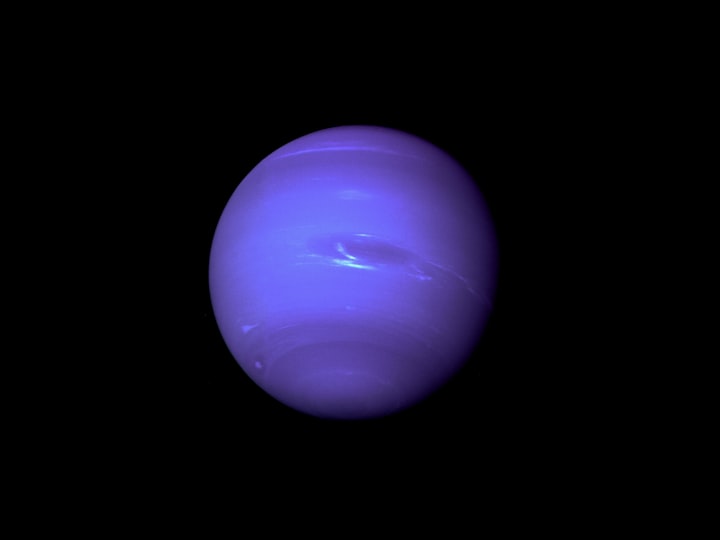It sounds like the plot of a mid-tier science fiction movie from the 80s. But this story is true.
And fascinating…
The story begins
For over a century, astronomers have speculated about the existence of a large, undiscovered planet in the outer reaches of our solar system.
While the search for this so-called “Planet X” has proven fruitless many times, recent evidence suggests that a truly massive object, nicknamed “Planet 9,” may really be out there, slowly tracing an bizarre elongated orbit thousands of times farther from the Sun than Earth.
Early hints of Planet 9
The idea of an unseen planet perturbing the orbits of the known worlds dates back to the 1800s.
As Mike Brown, the Caltech astronomer who revived the Planet 9 hypothesis explains:
“In 1820, Alexis Bouvard, director of the Observatoire de Paris, noticed something funny about Uranus…Bouvard concluded that either the old observations were in error, or yet another unseen planet was tugging Uranus — just slightly — from where it should have been.”
Bouvard’s observations led French mathematician Urbain Le Verrier to successfully predict the position of Neptune in 1846.
Emboldened by this discovery, astronomers spent the next century searching in vain for the predicted “Planet X” that was thought to be perturbing Neptune’s orbit as well.
However, by 1993, more detailed measurements showed that the known planets were precisely where they should be, seemingly ruling out a large Planet X.
Or so it seemed at the time…
Mysterious objects
“At nearly the exact moment that Planet X was being put to rest, astronomers found the first new object beyond Neptune since the accidental discovery of Pluto,” writes Brown.
This was the first of many dwarf planets and trans-Neptunian objects (TNOs) found in the distant Kuiper Belt region over the following decades.
Several of these newfound TNOs exhibited bizarre, highly elongated orbits unlike anything previously seen.
Objects like Sedna, discovered in 2003, never came close to Neptune yet traced paths taking them thousands of astronomical units (AU) away — far beyond the Kuiper Belt.
As Brown recounts: “Something massive was, or had been, tugging on the orbit of Sedna.”
The orbits of some of these distant bodies appeared strangely aligned and “twisted” out of the plane of the solar system.
Meanwhile, another population of objects had orbits pushed inwards, closer to the Sun than they should be. Astronomers struggled to explain these strange orbital patterns.
Resurrecting Planet X as Planet 9
In 2016, Caltech researchers Konstantin Batygin and Mike Brown published a bombshell study.
After extensive modeling, they concluded that the clustered orbits of half a dozen extremely distant Kuiper Belt objects could be naturally explained by the presence of an unseen, Neptune-sized planet in an anti-aligned eccentric orbit.
“This planet would capture Kuiper Belt objects with distant elongated orbits into stable orbits elongated in the opposite direction from the planet. Moreover, it would pull the perihelia of these Kuiper Belt objects away from the Kuiper Belt. And, in a result we did not expect, it would alter these elongated orbits, twisting them to be perpendicular to the plane of the planets…”
The proposed Planet 9 seemed to resolve multiple outstanding mysteries of the outer solar system at once.
Batygin and Brown calculated it to be roughly 10 times the mass of Earth, orbiting hundreds of AU from the Sun on a long, eccentric path reaching up to 1,200 AU at its most distant point.
“For us, this moment marked moving from working on an interesting hypothesis…to instantly realizing that we were talking about something that was really out there,” wrote Brown. “This was something waiting to be found.”
Ongoing hunt Planet 9
In the years since the radical Planet 9 hypothesis was announced, astronomers have vigorously searched the predicted regions of sky where the planet could reside.
Several recent studies have further strengthened the case for Planet 9’s existence while refining estimates of its orbit and brightness.
The story of planet 9 has held up surprisingly well for something that hasn’t been found.
However, pinpointing the planet’s current location has proved difficult given the uncertainties in its precise path.
“We no longer have to search the entire sky to find Planet Nine, but there’s still a lot of work to do.”
Large astronomical surveys and the upcoming Vera Rubin Observatory may lead to the next big discovery in space in the near future.
As Brown speculates:
“Perhaps during the next five years, someone, at some telescope somewhere, will spot a faint blip in the sky that moves to a slightly different spot the next night… Finally, after checking and double-checking and checking 10 more times, they’ll make a dramatic announcement to a now-anticipating world: Planet Nine is found; Planet Nine is real!”
Time will tell if astronomers can prove the existence of Planet 9, but the story is surely entertaining.
---
A writer is nothing without a reader. If you found this helpful, consider becoming my dear email friend. Nothing would make me happier.
About the Creator
Enjoyed the story? Support the Creator.
Subscribe for free to receive all their stories in your feed. You could also pledge your support or give them a one-off tip, letting them know you appreciate their work.







Comments
There are no comments for this story
Be the first to respond and start the conversation.